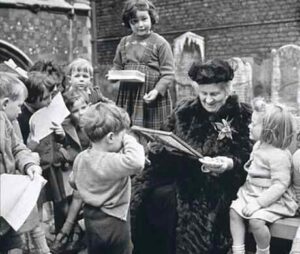Who is Maria Montessori?
 Maria Montessori was born on the 31st August 1870 in the town of Chiaravalle, Italy. Her father, Alessandro, was an accountant in the civil service, and her mother, Renilde Stoppani, was well educated and had a passion for reading.
Maria Montessori was born on the 31st August 1870 in the town of Chiaravalle, Italy. Her father, Alessandro, was an accountant in the civil service, and her mother, Renilde Stoppani, was well educated and had a passion for reading.
The Montessori family moved to Rome in 1875 and the following year Maria was enrolled in the local state school. Breaking conventional barriers from the beginning of her education, Maria initially had aspirations to become an engineer.
When Maria graduated secondary school, she became determined to enter medical school and become a doctor. Despite her parents’ encouragement to enter teaching, Maria wanted to study the male dominated field of medicine. After initially being refused, with the endorsement of Pope Leo XIII, Maria was eventually given entry to the University of Rome in 1890, becoming one of the first women in medical school in Italy. Despite facing many obstacles due to her gender, Maria qualified as a doctor in July 1896.
Soon after her medical career began, Maria became involved in the Women’s Rights movement. She became known for her high levels of competency in treating patients, but also for the respect she showed to patients from all social classes. In 1897, Maria joined a research programme at the psychiatric clinic of the University of Rome, as a volunteer. This work initiated a deep interest in the needs of children with learning disabilities. In particular, the work of two early 19th century Frenchmen, Jean-Marc Itard, who had made his name working with the ‘wild boy of Aveyron’, and Edouard Séguin, his student. Maria was appointed as co-director of a new institution called the Orthophrenic School. In 1898 Maria gave birth to Mario, following her relationship with Giusseppe Montesano, her codirector at the school.
At the age of twenty-eight Maria began advocating her controversial theory that the lack of support for mentally and developmentally disabled children was the cause of their delinquency. The notion of social reform became a strong theme throughout Maria’s life, whether it was for gender roles, or advocacy for children.
In 1901 Maria began her own studies of educational philosophy and anthropology, lecturing and teaching students. From 1904-1908 she was a lecturer at the Pedagogic School of the University of Rome. This period saw a rapid development of Rome, but the speculative nature of the market led to bankruptcies and ghetto districts. One such area was San Lorenzo, where its children were left to run amok at home as their parents worked. In an attempt to provide the children with activities during the day to fend of the destruction of property, Maria was offered the opportunity to introduce her materials and practice to ‘normal’ children. There, in 1907, she opened the first Casa dei Bambini (Children’s House) bringing some of the educational materials she had developed at the Orthophrenic School.
Maria put many different activities and other materials into the children’s environment but kept only those that engaged them. What she came to realise was that children who were placed in an environment where activities were designed to support their natural development had the power to educate themselves. 1909 Maria gave her first training course in her new approach to around 100 students. Her notes from this period provided the material for her first book published that same year in Italy, appearing in translation in the United States in 1912 as The Montessori Method, and later translated into 20 languages.
A period of great expansion in the Montessori approach now followed. Montessori societies, training programmes and schools sprang to life all over the world, and a period of travel with public speaking and lecturing occupied Maria, much of it in America, but also in the UK and throughout Europe.
Dr. Montessori was nominated for the Nobel Peace Prize in 1949, 1950 and 1951 and continued working, teaching and writing up to the time of her death. Over the past one hundred years children throughout the world have benefited from this educational approach that supports, nurtures, and protects natural development. Maria Montessori’s legacy lives on in the children whose lives are touched her discoveries about life.
In her own words:
“My vision of the future is no longer of people taking exams and proceeding on that certification… but of individuals passing from one stage of independence to a higher, means of their own activity, through their own effort of will, which constitutes the inner evolution of the individual.” – Introduction, From Childhood to Adolescence, Clio
“… The children themselves found a sentence that expressed this inner need. “Help me to do it myself!” How eloquent is this paradoxical request! …It is in this that our conception differs both from that of the world in which the adult does everything for the child and from that of a passive environment in which the adult abandons the child to himself” – The Secret of Childhood, p. 213
“I have served the spirits of those children, and they have fulfilled their development, and I kept them company in their experiences” – Absorbent Mind p. 284